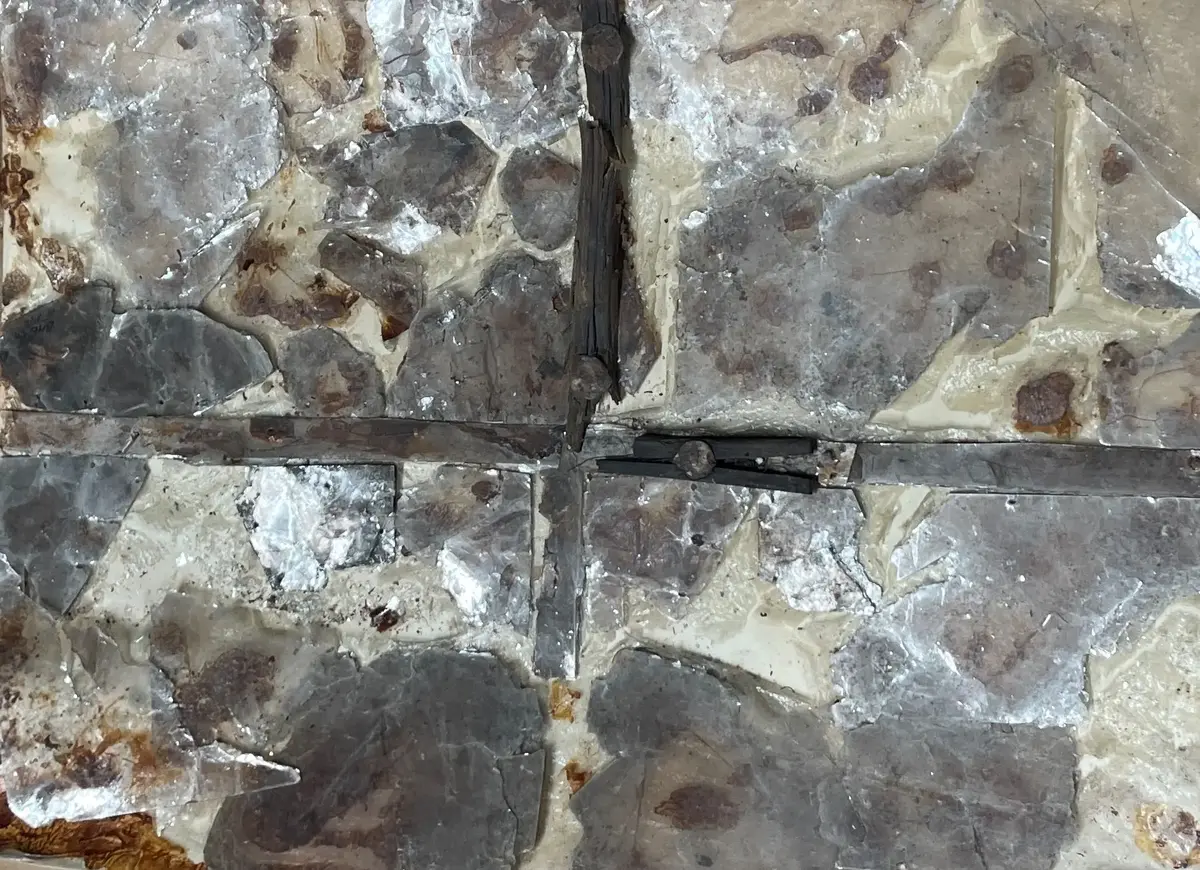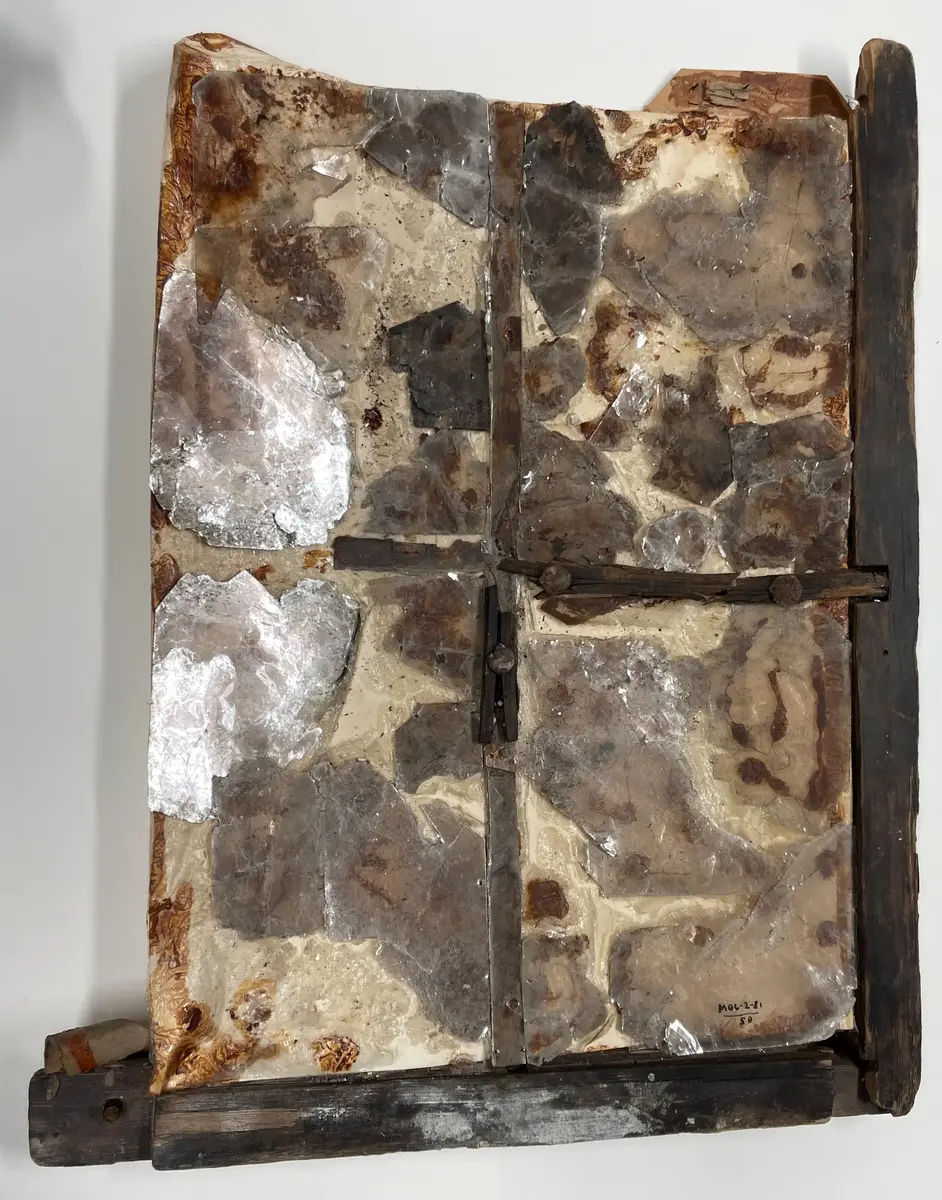- 1/1
The window in Svalbard museums collection is made of a frame and glass that were found in separate locations. Both were uncovered by Russian archologists in 1981, during excavations of Russian trapping stations on the archipelago. The effort was headed by the famous Russian archaeologist Vadim Starkov. The muscovite glass was found in the foundations of a cabin at Mosvatn on Sørkappøya, due south of Spitsbergen. Of the three sites there, only “Mosvatn 2” was suited for excavations.
“Mosvatn 2” consisted of two buildings: a small, inhabited hut and a bathhouse. Both buildings had large stone fireplaces and floors made of materials salvaged from ships. The inhabited hut was surrounded by 16 large casks placed closely together, perhaps to protect the hut from the elements. The bathhouse was also made up of some driftwood. There, remnants of a tub, a barrel, a wooden shovel and birch twigs were found. In what used to be the inhabited hut the archaeologists found 84 artifacts. One group of artifacts were found besides the hut, one group inside the living quarters and another in the floor. The muscovite glass was found in the first group, outside the hut.
In 1981 the archeologists also conducted an excavation at “Stabelva”,13 km south of “Isfjord radio”. The site they excavated contained remnants of a small trapper’s cabin. On the wooden floor, made of materials salvaged from a ship, laid a cultural layer of artifacts. Among these artifacts they found remnants of a window frame and fittings. It’s the remnants of this window frame that at a later stage was fitted together with the muscovite glass found at Mosvatn. The frame consisted of two strips, sharpened in the ends so that they could be pieced together. In the rapport from the excavation, it was stated that the strips had slits where the muscovite glass could be attached. Fittings formed like frames on the exterior provided wind proofing. The fittings consisted of a flat plank with two side knuckles and round holes in the ends for fastening.
- 1/1
Muscovite glass has been found in excavations of trapping stations in “Rekvika”, “Russekeila”, “Kapp Lee” and “Ymerbukta”. In some of these locations the glass is clearly remnants of windows. Some claim that windows made of muscovite glass and regular glass was used simultaneously.
Muscovite can be found in Svalbard, but we believe that the material used in these windows was brought from Russia. The flakes are relatively large, and there are no records of such large flakes being produced here. Still, it cannot be ruled out that they were in fact made of locally sourced muscovite.
This also applies to the frame. It has been professionally crafted, and it is therefore believed to have been prefabricated in Russia. The Pomors did a lot of handicrafts during the long winter months, but such an intricate frame would require multiple types of planers and tools. We know that the Russian trapper’s cabins had a lot of materials and equipment from Russia, like bricks for ovens, and it seems likely that they would also bring windows. Given the extensive extraction of muscovite in Russia it is highly likely that entire windows were prefabricated there.

